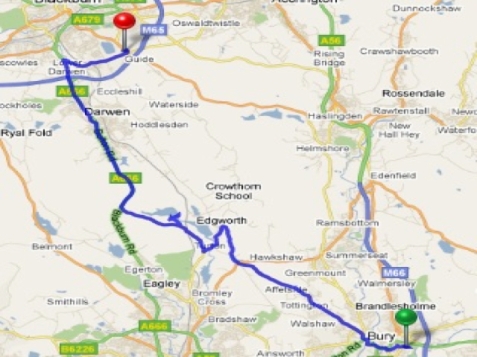Well, it seems that India, that ‘spiritual’ holiday destination so beloved of hippies, is second from top in the list of countries threatened by climate change:-
Bangladesh and India are the two countries most vulnerable to the impacts of climate change over the next 30 years, according tocalculations by the British global risks analysis company Maplecroft.
The same study determined that the countries least at risk from climate change are the Scandinavian nations and Ireland. The U.S. and much of Europe are among the countries facing “medium risk.”
Assessing a number of variables to calculatethe vulnerability of 170 countries to the impacts of climate change,Maplecroft identified Bangladesh and India as the two countries “facing the greatest risks to their populations, ecosystems and business environments.”
Other South Asian countries ranked in the highest category were Nepal, Afghanistan and Pakistan..The company’s Climate Change Vulnerability Index (CCVI) evaluates 42 social, economic and environmental factors to assess national vulnerabilities across three core areas, Maplecroft said in a news release.
“These include: exposure to climate-related natural disasters and sea-level rise; human sensitivity, in terms of population patterns, development, natural resources, agricultural dependency and conflicts; thirdly, the index assesses future vulnerability by considering the adaptive capacity of a country’s government and infrastructure to combat climate change.”
The index rates 16 countries as “extreme risk,” with the South Asian nations of Bangladesh (1), India (2), Nepal (4), Afghanistan (8) and Pakistan (16) among those with the most exposure to climate change, whilst Sri Lanka (34) is rated “high risk.”
Other countries rated as “extreme risk” include: Madagascar (3), Mozambique (5), Philippines (6), Haiti (7), Zimbabwe (9), Myanmar (10), Ethiopia (11), Cambodia (12), Vietnam (13), Thailand (14) and Malawi (15).
According to Maplecroft, the countries with the most risk are characterised by high levels of poverty, dense populations, exposure to climate-related events; and their reliance on flood and drought prone agricultural land. “Africa also features strongly in this group, with the continent home to 12 out of the 25 countries most at risk,” Maplecroft said.
“Throughout 2010, changes in weather patterns have resulted in a series of devastating natural disasters, especially in South Asia, where heavy floods in Pakistan affected more than 20 million people (over 10 percent of the total population) and killed more than 1,700 people,” maplecroft said in its release.
“Very minor changes to temperature can have major impacts on the human environment, including changes to water availability and crop productivity, the loss of land due to sea level rise and the spread of disease.”
“There is growing evidence climate change is increasing the intensity and frequency of climatic events,” said Anna Moss, Environmental Analyst at Maplecroft. “Very minor changes to temperature can have major impacts on the human environment, including changes to water availability and crop productivity, the loss of land due to sea level rise and the spread of disease.”
Maplecroft rates Bangladesh as the country most at risk “due to extreme levels of poverty and a high dependency on agriculture, whilst its government has the lowest capacity of all countries to adapt to predicted changes in the climate.”
In addition, Maplecroft added,Bangladesh has a high risk of drought and the highest risk of flooding. “This is illustrated during October 2010, when 500,000 people were driven from their homes by flood waters created by storms. However, despite the country’s plethora of problems, the Bangladesh economy grew 88 percent between 2000 and 2008 and is forecast to by the IMF to grow 5.4 percent over 2010 and up to 6.2 percent over the next five years.
India, ranked 2nd, is already one of the world’s power brokers, but climate vulnerability could still adversely affect the country’s appeal as a destination for foreign investment in coming decades, Maplecroft said.
“Vulnerability to climate-related events was seen in the build up to the Commonwealth Games, where heavy rains affected the progress of construction of the stadium and athletes’ village.
“Almost the whole of India has a high or extreme degree of sensitivity to climate change, due to acute population pressure and a consequential strain on natural resources. This is compounded by a high degree of poverty, poor general health and the agricultural dependency of much of the populace.”
‘Low-risk’ countries
There are 11 countries considered “low risk” in the index, with Norway (170), Finland (169), Iceland (168), Ireland (167), Sweden (166) and Denmark (165) performing the best.
“However, Russia (117), USA (129), Germany (131), France (133) and the UK (138) are all rated as ‘medium risk’ countries, whilst China (49), Brazil (81) and Japan (86) feature in the ‘high risk’ category,” Maplecroft said.
Maplecroft researches, indexes and maps over 500 risks and issues to identify exposures and opportunities in both countries and companies, the company said.
It will be interesting to see how these people who apparently care so much about the planet and India manage to square the huge environmental impact of ‘plane travel to India with the fact that the country is right in line for being hit by the climate change juggernaut.
Interesting times indeed.









